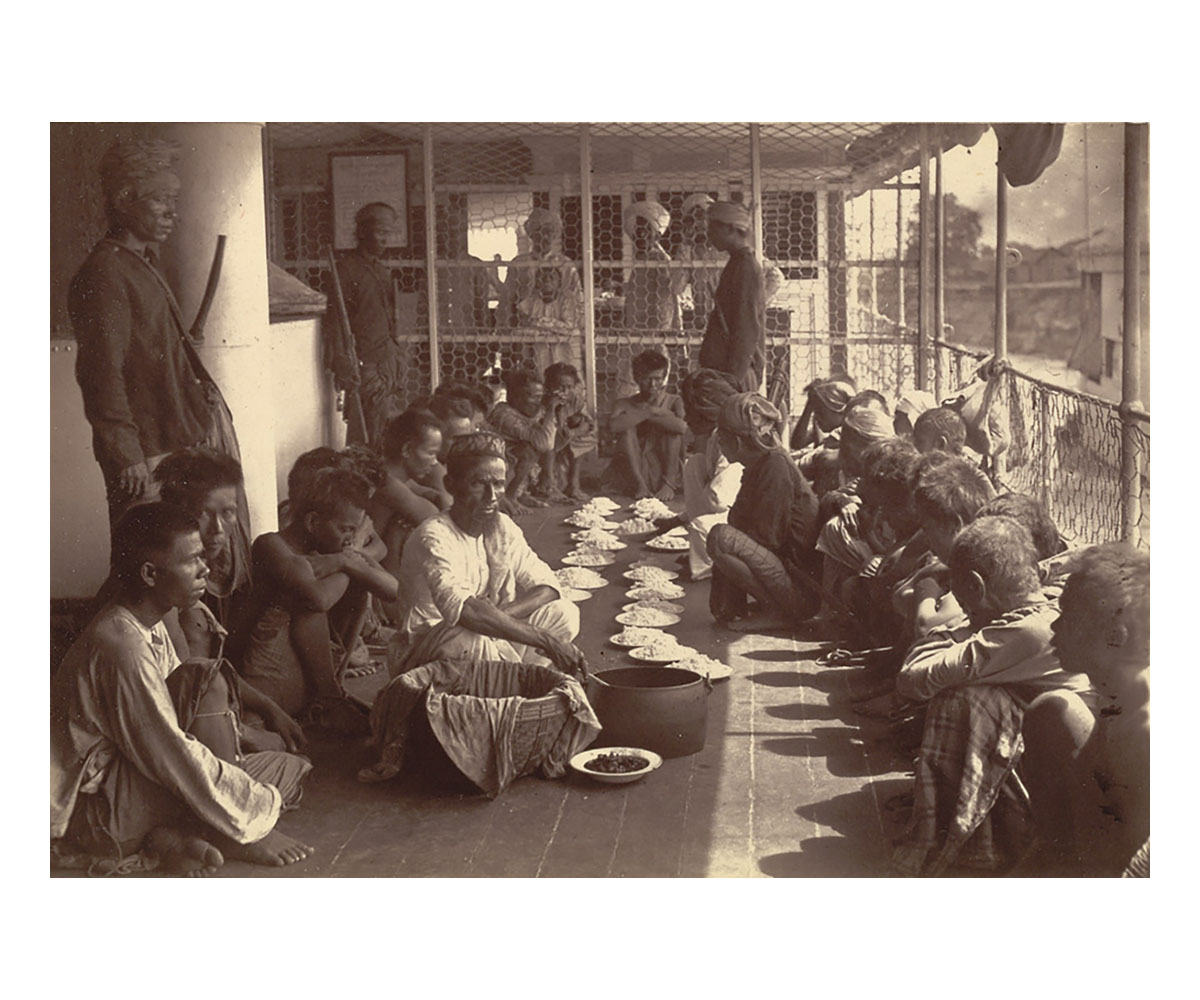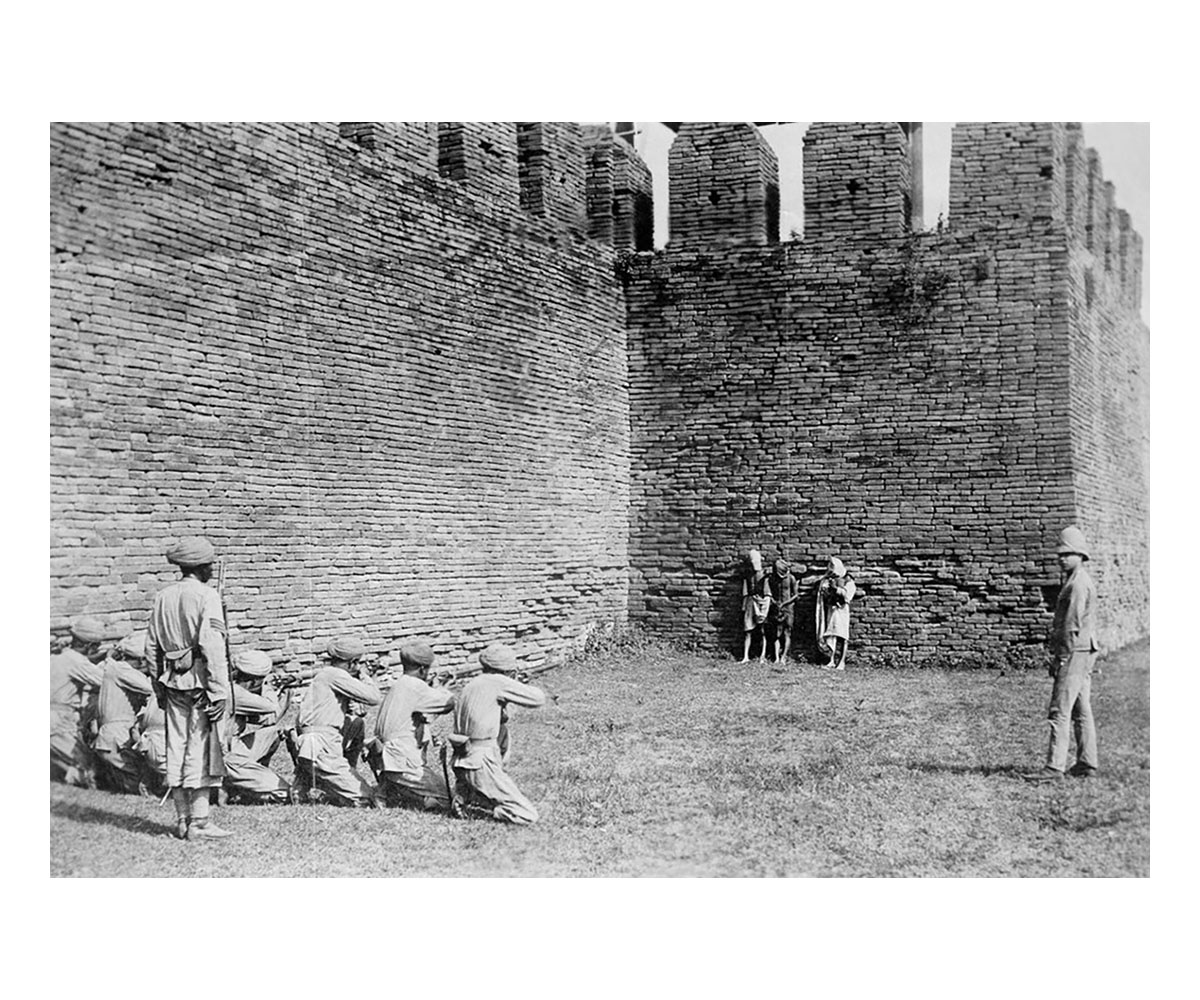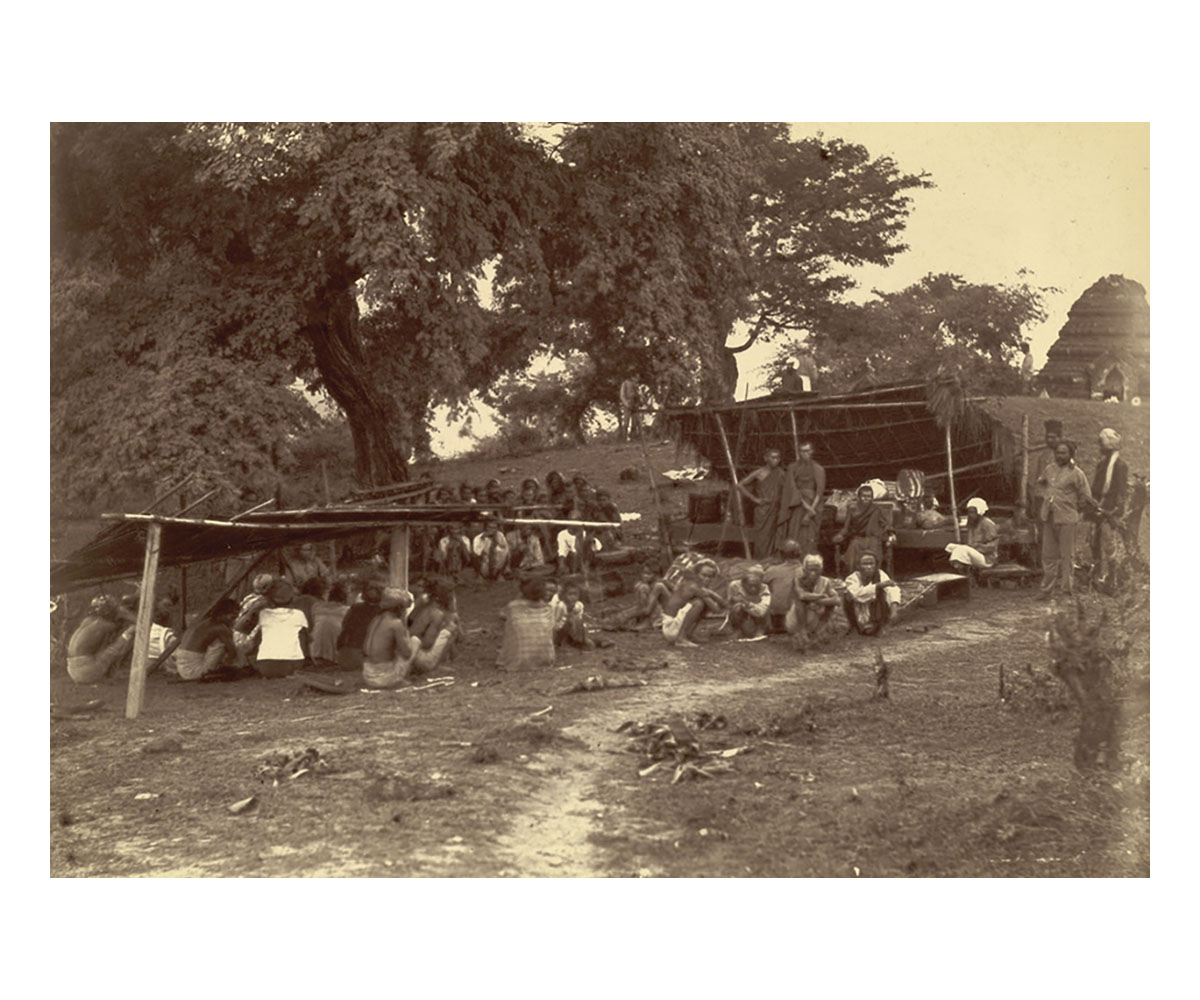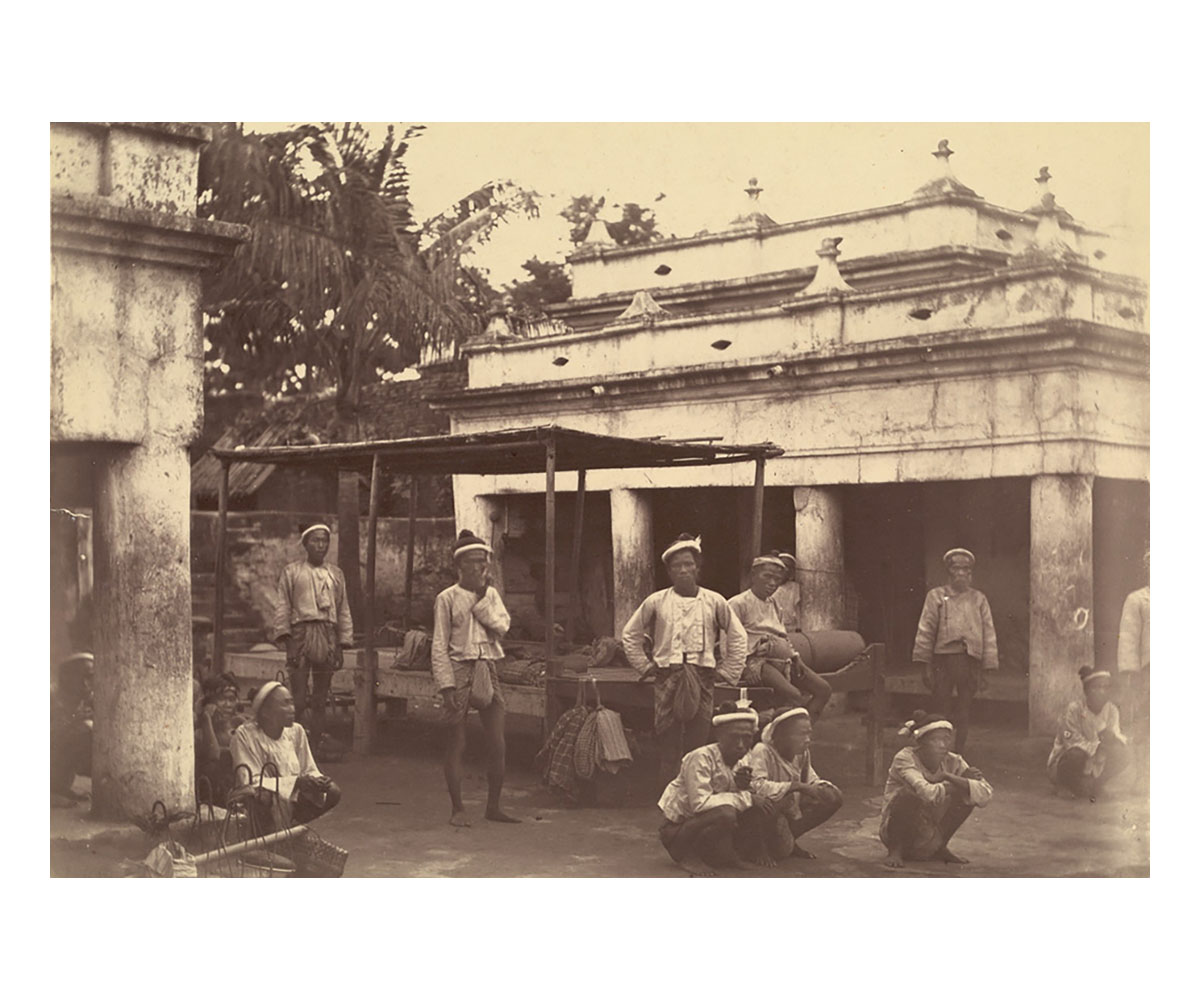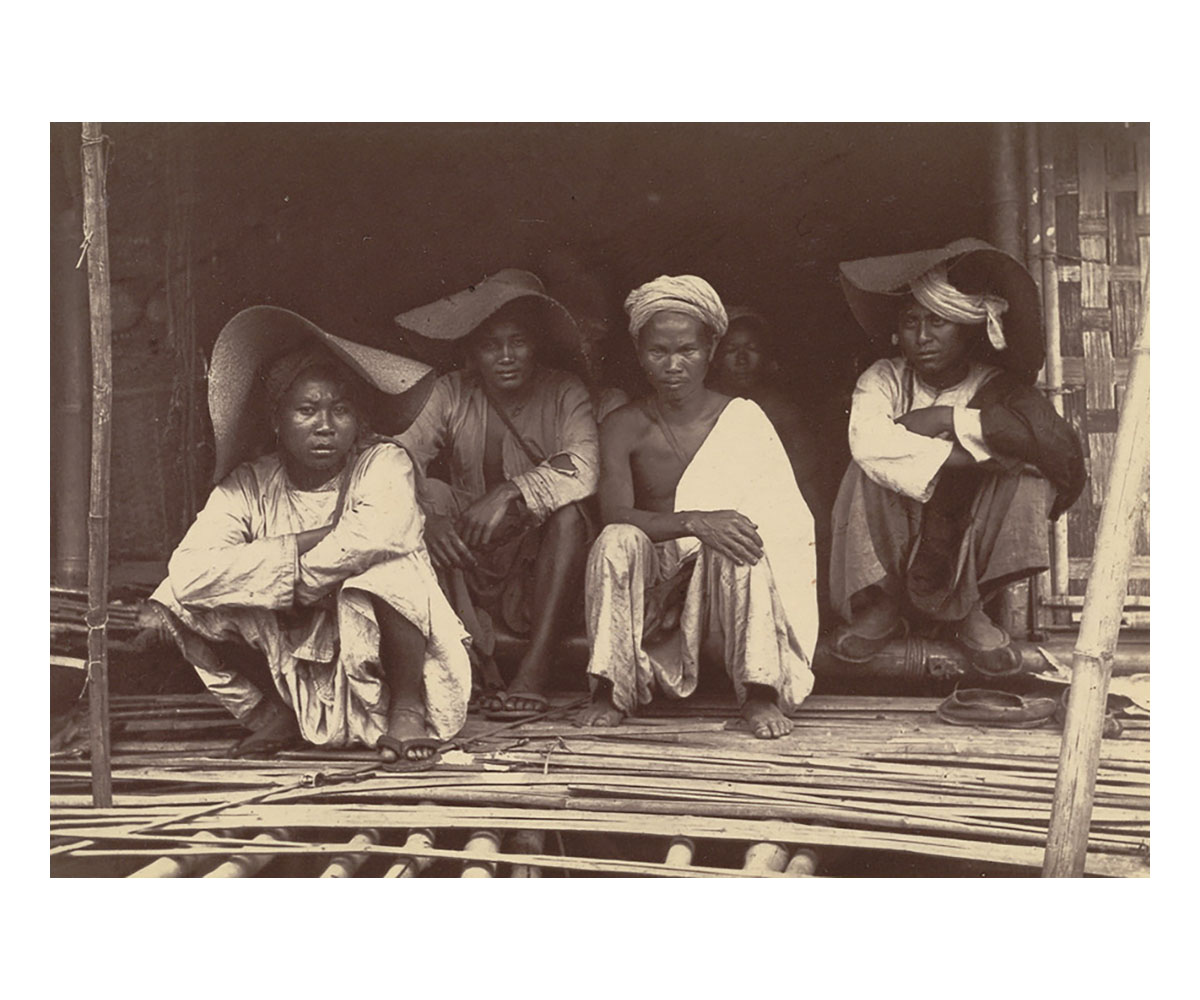PERSPECTIVES
Documenting Trauma: The Colonial Gaze and the Ethics of Photography in 19th Century India and Myanmar
A photograph serves as a document of evidence, bearing witness to an event, both its happening and its aftermath. In some cases, images become a voyeuristic means for a distant — often privileged — audience to satisfy their curiosity about parts of the world and people unfamiliar to them. It is no surprise then, that questions about the ethics of photography and the nature of documentation are as old as the form itself.
In 1886, a charge of inhumane treatment of prisoners was brought against Willoughby Wallace Hooper, a British military officer and amateur photographer. The accusation was linked to Hooper’s photographs of three Burmese prisoners being executed by a British firing squad in Mandalay, Burma (present-day Myanmar). According to contemporary accounts, Hooper wanted to take images of the bullets striking the blindfolded prisoners. As a result, the command to discharge was delayed by a few moments while he adjusted his camera.
His actions resulted in a loss of honours but he retained his place in the army and was later promoted to the rank of colonel. These images were, however, not included in the compilation of Hooper’s photographs from Myanmar, Burmah: A Series of One Hundred Photographs Illustrating Incidents Connected with the British Expeditionary Force to that Country, from the Embarkation at Madras, 1st Nov 1885, to the Capture of King Theebaw, with Many Views of Mandalay and Surrounding Country, Native Life and Industries (1887), which earned praise for its comprehensive documentation of the British military campaign.
This was not Hooper’s first brush with controversy as a photographer. Between 1876 and 1879, he had travelled through southern India recording the effects of a devastating famine in erstwhile Madras. These images captured a disaster that claimed at least six million victims. Here, too, Hooper’s method of capturing his photographs was questioned. Reports claimed that Hooper segregated his subjects — all famine victims — by age and sex before photographing them in staged settings, against official buildings, or in relief settlements. According to reports published in British publications of the time, he did not offer any assistance to the victims after photographing them. Furthermore, these famine images were not simply a neutral record; they were sold commercially, as albums and postcards, often carrying labels like “Forsaken” or “Deserving Objects of Gratuitous Relief,” and were also printed in newspapers in England.
While remarking on the Burma photographs, a contemporary reporter, Grattan Geary, termed Hooper’s actions as “reprehensible” but also pointed out that, although the circumstances under which the images were made belied an imbalance of power, the images still revealed the brutal nature of suppression employed in the conquest of territories by colonial forces. Similarly, the famine images documented the effects of a disaster where relief was hampered by failed administrative policies. In that sense, both sets of photographs are documentations that capture a moment in time.
Despite their documentary function, we must also consider what these images say about the ethics of photography — particularly of recording trauma and suffering. In her well-known work, On Photography, Susan Sontag describes the implicit aggression of photography and how the photographer may exhibit a sense of symbolic possession of the subjects who often have no control over how they are portrayed — an aspect visible in the images Hooper has made of the Burma executions and the Madras famine. In those images, we clearly see, as the scholar Kapil Komireddi also notes, how Hooper prioritises the composition and aesthetic qualities of a photograph over the people it featured. Hooper’s image titled “Forsaken” — which shows two young, malnourished children, against a dramatic setting of the trunk and roots of a peepul tree, exemplifies this approach. The photographed subject is also excluded from the economic transaction of these photographs, which invariably benefited Hooper, since he sold them commercially.
Hooper’s images of the famine and the execution lay an emphasis on staging and making an image over the dignity and discomfort of victims. Even as his images of the famine helped raise awareness of the tragedy, their composition is an example of the colonial gaze that stripped people of their personhood. Presenting his subjects as objects of curiosity, he captured them during a vulnerable moment, within a context in which they did not have the agency to refuse.
As upsetting as these images are, they are also a record. Their study from a critical perspective raises important questions about the ethics of making, circulating and viewing images, and how power structures such as the ones under colonialism affected the actions intrinsic to photography.
What marks the line between documentation and exploitation in a record of conflict, disaster, and trauma?
How best can a photographer make an image while acknowledging the dignity of an individual or a community?
What does a photographer owe their subject when the photograph of a distressing event becomes a commodity?
Bibliography
Azoulay, Ariella. The Civil Contract of Photography. New York: Zone Books, 2008.
Azoulay, Ariella. Potential History: Unlearning Imperialism. London: Verso, 2019.
Berchiolly, Carmin. “Capturing Burma: reactivating colonial photographic images through the British raj’s gaze.” Graduate Research Theses & Dissertations, Northern Illinois University, 2018.
British Library. “A Group of Dacoits captured near Mandalay.” Accessed April 06, 2023. https://www.bl.uk/onlinegallery/onlineex/apac/photocoll/a/019pho000000312u00075000.html
Chaudhary, Zahid R. Afterimage of Empire: Photography in Nineteenth-century India. Minneapolis: University of Minnesota Press, 2012.
Geary, Grattan. Burma, After the Conquest, Viewed in its Political, Social and Commercial Aspects from Mandalay. London: Sampson Low, Marston, Searle & Rivington: 1886.
Howe, Kathleen. “HOOPER, COLONEL WILLOUGHBY WALLACE (1837–1912).” In Encyclopedia of Nineteenth-Century Photography, Volume 1: A–I. Edited by John Hannavy, 713–4. New York: Routledge, 2008.
Komireddi, Kapil. “Pomp and Privation in Victorian India.” University of Oxford, July 2016. Accessed March 13, 2023. https://open.conted.ox.ac.uk/resources/documents/pomp-and-privation-victorian-india-kapil-komireddi
Pinney, Christopher. The Coming of Photography in India. London: The British Library, 2008.
Sontag, Susan. On Photography. New York: Farrar, Straus and Giroux, 1977.
Sontag, Susan. Regarding the Pain of Others. New York: Farrar, Straus and Giroux, 2003.




